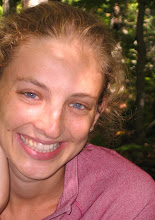 American conceptual artist and photographer Christopher Willams has designed a press release as puzzling and self-reflexive as the works on show at the David Zwirner Gallery from February 14 to March 29, 2008. Williams, who was born in Los Angeles in 1956, works mainly with photography to ask questions about the medium itself, and in the press release he reproduces some of his artistic process by exploring the process of writing about the exhibition. In the “program”, Williams presents the future viewer with a series of “starting points” through which to make sense of the show. As the writing starts over and over again from a different perspective, Williams makes short allusions to some of the ideas addressed in his work, until the writing breaks down into an analysis of artistic production itself.
American conceptual artist and photographer Christopher Willams has designed a press release as puzzling and self-reflexive as the works on show at the David Zwirner Gallery from February 14 to March 29, 2008. Williams, who was born in Los Angeles in 1956, works mainly with photography to ask questions about the medium itself, and in the press release he reproduces some of his artistic process by exploring the process of writing about the exhibition. In the “program”, Williams presents the future viewer with a series of “starting points” through which to make sense of the show. As the writing starts over and over again from a different perspective, Williams makes short allusions to some of the ideas addressed in his work, until the writing breaks down into an analysis of artistic production itself.Williams’ program, similarly to his photography, seeks to expose the commercial process through which art is packaged and marketed. As he writes, “artistic production functions as advertising for the order under which it is produced. There will be no other space than this view according to which etc…” Similarly, photography for Williams is mainly associated with its commercial purposes. In response and in order to resist this function, Williams creates photographs that challenge to viewer to think more critically about the process of photography, as well as the function of photographic images in society.
 Aesthetically, Williams’ images have the high quality typical of commercial work, yet the subjects of his work are always more complex than what the image seems to give away. Williams’ exploration of photography happens both mechanically, as he dissects cameras and lenses in a way reminiscent of Damien Hirst’s dissected animals in formaldehyde, as well as conceptually. Unfortunately, because of the self-reflexive quality of the press release and the absence of a well-informed guide in the gallery, his work remains cryptic to the unfamiliar eye. For instance, a woman wearing only lingerie and a Gambian man holding a camera pose for two separate photographs, but how can we place them in the context of Williams’ work without more information than the image itself?
Aesthetically, Williams’ images have the high quality typical of commercial work, yet the subjects of his work are always more complex than what the image seems to give away. Williams’ exploration of photography happens both mechanically, as he dissects cameras and lenses in a way reminiscent of Damien Hirst’s dissected animals in formaldehyde, as well as conceptually. Unfortunately, because of the self-reflexive quality of the press release and the absence of a well-informed guide in the gallery, his work remains cryptic to the unfamiliar eye. For instance, a woman wearing only lingerie and a Gambian man holding a camera pose for two separate photographs, but how can we place them in the context of Williams’ work without more information than the image itself?The display of the images in For Example: Dix Huits Leçons Sur La Société Industrielle (Revision 7) is reminiscent of a game of Memory, where players have to look for the double of an image: a lot of the photographs on display come with a double in a different corner of the gallery. While the effect of the display is exciting for the viewer, once all the images have been matched and the quality of the photographs acknowledged, we are left with little to engage with. In other words, in this exhibition Williams participates in the reproduction of a “commercial viewing experience”, as spectators observe the quality of the images but have a limited understanding of Williams’ concept.
We might have to wait for an advanced “Google image search” to learn more about Williams’ subject choices, but would he agree to our searching? Maybe next time Williams should avoid including the word “lessons” in his title: while his word choice is, of course, ironic, his attitude is more pedantic than what he might want to acknowledge.
David Zwirner
February 14 - March 29, 2008
http://www.davidzwirner.com/

No comments:
Post a Comment